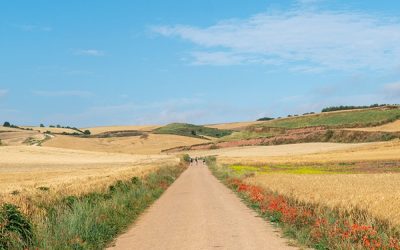Walking in Catalunya
Nike and Jacint spent some amazing weeks in Catalunya while researching for their Walking in Catalunya-Barcelona guidebook. They found diverse landscape with myriad trails and stunning views.

The rock pinnacles bathed in warm orange light as evening was approaching on a late August day. It was still very warm but not as hot as around lunchtime when the grand 360-degree panorama greeted us on the summit of St Jeroni, the highest peak in the Montserrat.
The Montserrat range lies only about 50km from Barcelona, and the iconic monastery with the rock face background is visited by hundreds of people every day. From Barcelona it is easy to travel by train to Monistrol de Montserrat and then take the scenic cable car ride to the monastery.
However, the most rewarding route to the monastery is to climb the section of the GR96 from the village of Monistrol de Montserrat. We spent numerous days exploring the myriad walking trails in the Montserrat Natural Park but the more we walked the more trails we found that we wouldn’t want to miss. So we thought that we could squeeze two walks in one day; we followed the popular trail among pinnacles to the peak of St Jeroni, before we started the second walk of the day from Can Maçana.
There were several trails starting from the picnic site and we chose a short and easy route. However, shortly after the start we made a detour to the ruined Sant Pau Vell church and from the ruins the views of the rock ‘needles’ were so spectacular and the late afternoon lights were so perfect that we spent lot more time taking photos than we planned to.
When we got close to the rock formations the obvious path became less obvious and the descent back to the well trodden tracks was a bit slow and at the end we only made it back to Can Macana car park at twilight when families were gathering for an evening picnic. Satisfied with the day we found a picnic table and wolfed down the leftover bread and cheese as the last light of the day disappeared.
St Llorenç del Munt i l’Obac Natural Parc
The previous week we wandered among fascinating rock formations in the St Llorenç del Munt i l’Obac Natural Parc, which is located only about 40km from Barcelona. A scenic route led us up to the monastery built on La Mola, the highest peak in the natural park.
The 11th century monastery was destroyed by Napoleon’s troops and the current building was constructed in the late 19th century without altering the original design.


From the summit we admired the extensive views towards the Montseny and Montserrat ranges and it was easy to make out the outline of the mountains of the Pyreneese. The trails were popular - especially at the weekends - in the St Llorenç del Munt i l’Obac Natural Parc, but we climbed Montcau on a weekday morning and met only a handful of people.
On a rather warm and sunny day we followed a section of the Els 3 Monts trail from Coll d’Estenalles car park – with views towards Montcau as well as the Montserrat range – to the charming village of Mura.

Montseny
A few weeks previously we followed the meandering trails in the lush mountains and climbed Les Agudes, Matagalls and Turó d l’Home, the highest peaks of the Montseny. We crossed streams on rocks and drank fresh water from fountains. The evenings were spent gazing at the star-dotted sky, and counting shooting stars.


On the hottest day of the week-long heatwave, when temperatures soared well into the 30s, we hiked from Gualba to Santa Fe. Almost the entire route was uphill and we met only one other hiker, who wisely chose to walk the opposite direction, descending to Gualba. According to a local ranger, it was unusually hot but still not as hot as in other places in Catalunya because the Montseny is famously cooler than Barcelona or the coast.
Vic and Guilleires Savasonna Natural area
Leaving the mountains of Montseny we based ourselves in the Vic and Guilleires Savasonna Natural area for a few days. There might not be high mountains in this area but views of the almost vertical cliffs accompanied us on a trail near Tavertet.
From Tavérnoles we followed the waymarked route to the 11th century Sant Pere de Casserres monastery, which was built in a stunning location. We also walked from Vilanova de Sau to a hidden church and then onto a small rocky peak where we enjoyed some views of the Sau reservoir, was created near the village of Vilanova de Sau in 1962. The water covered the former village of Sant Romà de Sau and the tower of the church Sant Romà is visible when the water level is low.


Penedés and Garraf
From the Montserrat we travelled south, where we spent the last week of our research trip skirting around endless vineyards that produce some fine wines in the Penedés. We followed some steep paths that led us to ruins, which once were castles perched on strategic locations, and then walked through the rugged limestone landscape in the Garraf Natural Park.
Each natural park offered a very different landscape with varied, amazing trails and far reaching views, and it was easy to find a route for every day. The most difficult part of the research – selecting the best walks for the book – was waiting for us at home.














